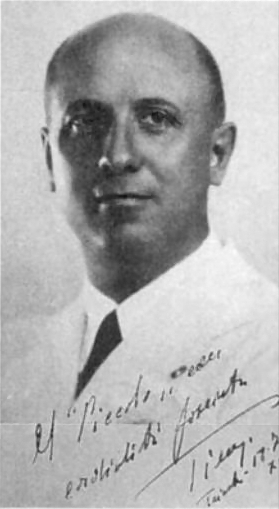
Altamura is a town and comune of Apulia, in southern Italy. It is located on one of the hills of the Murge plateau in the Metropolitan City of Bari, 45 kilometres southwest of Bari, close to the border with Basilicata. As of 2017, its population amounts to 70,595 inhabitants.

Minervino Murge is a town and comune, former bishopric and present Latin Catholic titular see in the administrative province of Barletta-Andria-Trani in the region of Apulia in southern Italy, lying on the western flank of the Murgia Barese mountain chain.

Andrea Matteo Acquaviva, 8th Duke of Atri (1458–1529) was an Italian nobleman and condottiero from the Kingdom of Naples. Born in Conversano, Puglia, he was the second son of Duke Giulio Antonio Acquaviva and his wife Caterina Orsini del Balzo. She was a first cousin of Queen Isabella, the wife of King Ferrante of Naples.
Giovanni Faber was a German papal doctor, botanist and art collector, originally from Bamberg in Bavaria, who lived in Rome from 1598. He was curator of the Vatican botanical garden, a member and the secretary of the Accademia dei Lincei. He acted throughout his career as a political broker between Maximilian I, Elector of Bavaria and Rome. He was a friend of fellow Linceian Galileo Galilei and the German painters in Rome, Johann Rottenhammer and Adam Elsheimer. He has also been credited with inventing the name "microscope".

The Legislature VII of Italy was the 7th legislature of the Italian Republic, and lasted from 5 July 1976 until 19 June 1979. Its composition was the one resulting from the general election of 20 June 1976.
Montréal de Albarno, also known as Fra Moriale was a Provençal mercenary and condottiero.

Francesco Fedeli, nicknamed Francesco Maggiotto or also il Maggiotto was an Italian painter from Venice.
Nunziante Ippolito (Nunciante) was an Italian physician and anatomist. He studied in Naples and worked in one of the most important hospitals of the Reign of Two Sicilies and Europe, the Ospedale degli Incurabili. He worked also at Pellegrini hospital and at the University of Naples. Ippolito died in 1851.

Proletarian Democracy was a far-left political party in Italy.
Matteo Villani (1283–1363) was an Italian historian.

Altamura Castle was a castle located in the city of Altamura, now completely demolished. It was located over today's piazza Matteotti and a few remains of it are still visible inside the adjacent buildings, which were built partly with stones and structural elements from the castle. In a warehouse are an ogival arch and some stone coats of arms. A few other remains are found in the adjacent buildings, which were built in the 19th century.
Camillo Caetani (Gaetano) was an Italian aristocrat and Papal diplomat in several European capitals during the early Counterreformation.

The Altamuran Revolution was a three-month period of self-government of Italian town Altamura, right after the birth of the Parthenopean Republic which ousted the Bourbons and the Kingdom of Naples. The city of the Kingdom of Naples was then defeated and taken by the so-called Sanfedisti, led by cardinal Fabrizio Ruffo, after a battle on the city walls. After being defeated, most Altamurans managed to flee through Porta Bari, one of Altamura's main gates.

Ottavio Serena was an Italian politician, judge, prefect and historian. He is known in his hometown Altamura for his works about local history, such as the Altamuran Revolution (1799). His contribution and the testimonies he collected allowed to shed light on some historical events (such as the killing of Giovanni Firrao and on legendary toponyms.
Giovanni Pipino da Barletta was an Italian nobleman and dignitary of the Kingdom of Naples. He started the Pipino noble family, which, after just a few decades, disappeared with the death of his grandson Giovanni Pipino di Altamura and his brothers.
Giovanni Pipino may refer to:

Porta Matera was one of the main gates of the old city of Altamura. They were part of the City Walls of Altamura, which were completely demolished during the nineteenth century since they had become useless for defence purposes. The gate itself was demolished in 1872. The monastery Monastero del Soccorso is located on the left side of the gate, while on the right some ruins of the city walls can be seen, presumably saved from destruction because of the bas-relief depicting "Pipino's leg".

The City Walls of Altamura were a military structure meant for defensive purposes and located in the city of Altamura, Italy. Its origin dates back to the Middle Ages and it was in use until the 19th century when it started to be gradually torn down. Nowadays only a few isolated parts of the walls survive. It shouldn't be confused with the Megalithic Walls of Altamura, which date back to the 5th–4th century BC and intersect in some parts with the city walls.

Carlo Tiengo was an Italian Fascist politician and civil servant, Minister of Corporations of the Kingdom of Italy from February to April 1943 and member of the Chamber of Fasces and Corporations. He also served as prefect in several Italian cities, including Trieste, Milan and Turin.

Baron Pietro De Francisci was an Italian jurist and Fascist politician who served as Minister of Justice from 1932 to 1935.














